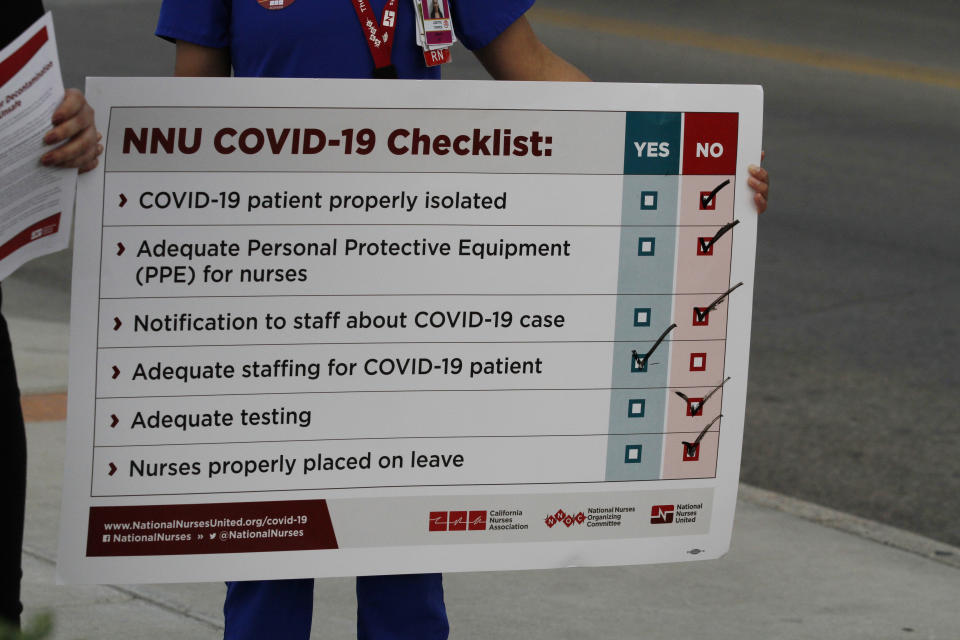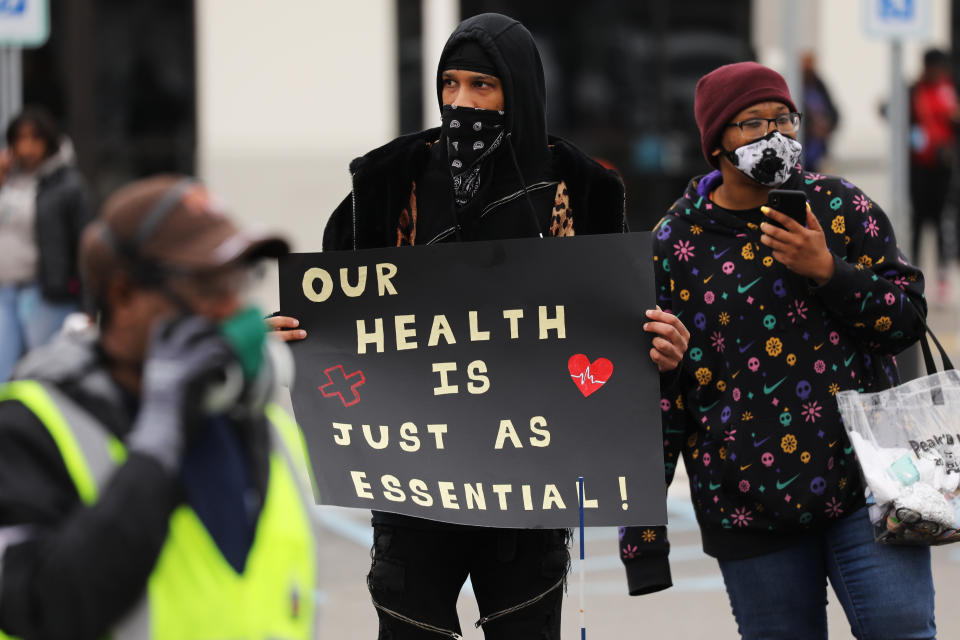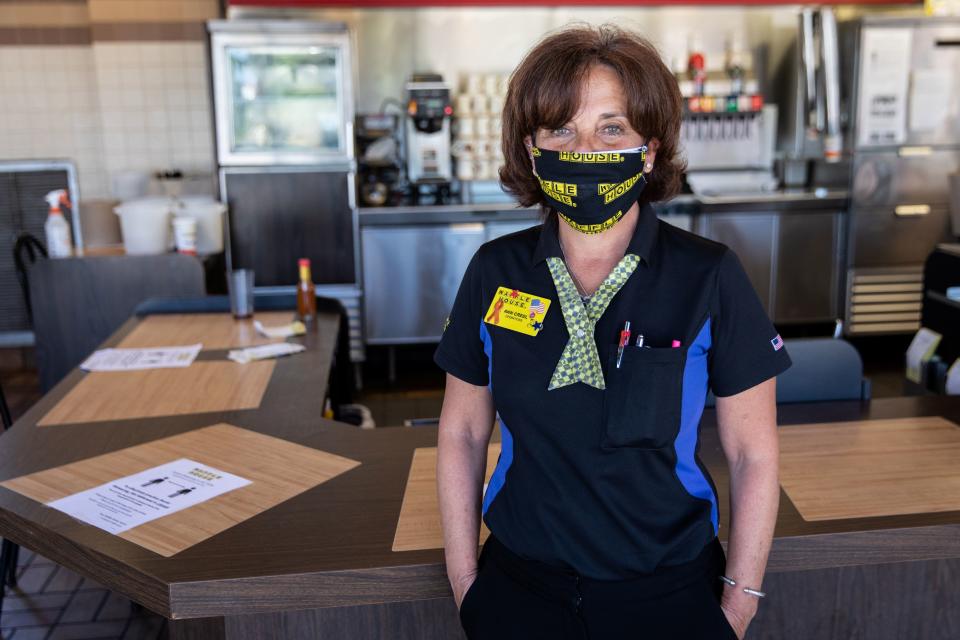When Americans come back to work, we could see a 'spike in litigation' over coronavirus
As COVID-19 infection rates begin to level off, and governments mull unprecedented action to return millions of Americans back to offices, manufacturing facilities, warehouses, restaurants, and retail locations, legal protections created for a pre-pandemic world are about to be tested. And businesses may be exposed to a wave of new lawsuits.
“When people are going back to work and getting back out to normal life you're going to see a spike of infections, and I fully expect that will be followed with a spike in litigation,” Eric A. Swan, an attorney with Lathrop GPM who handles tort defense on behalf of Fortune 500 companies, told Yahoo Finance. Swan describes the coming claims as “battlegrounds” that will settle new labor and business disputes.
The anticipated uptick has labor and employment attorneys shifting focus from helping clients navigate the avalanche of coronavirus-related furloughs, layoffs, and work from home mandates, to preparing for employee and third-party claims against business owners for personal injury, wrongful death, discrimination, compensation, and benefits.

‘They’re just looking for a settlement’
While personal injury and wrongful death claims may be difficult for workers to prove given the challenges of pinpointing where a COVID-19 infection took place, claims are still expected. One reason is that they are ripe for settlement because workers who allege they contracted COVID-19 due to an employer’s failure to provide a safe work environment, and estates of deceased workers who make similar claims, are expensive to defend. Swan also anticipates a slew of traditional personal injury and class action complaints from plaintiffs alleging they contracted COVID-19 during a visit to or interaction with businesses that failed to adhere to safety guidelines.
“The plaintiffs will file the lawsuit, knowing that they're going to have causation problems, and knowing that they're going to have difficulties in their case,” Swan said. “The cost of litigating those is so high that they're just looking for a settlement.”

Laid off employees versus those who were furloughed
Another category getting a lot of attention, according to Martha Doty, counsel with the international law firm Alston & Bird, is the difference between bringing back furloughed employees, versus laid off employees. Laid off employees, she said, are essentially new hires, requiring an entirely different onboarding process.
“You have to treat them in the same way as you would a regular newly-hired employee, in terms of onboarding,” she said. The technicality triggers a company’s new hire policies that may include drug and background screenings.
Doty said employers and workers are going to have to think through those types of issues in advance, and how to handle negative results if they get them. Negative results, for example, could invalidate a laid off worker’s eligibility to return to work if company policy is not amended.
Laid off, returning employees may also face difficulty picking up tenure-based benefits where they left off, including accrued paid time off and sick leave. Workers treated as new employees, Doty said, may be required to re-earn those benefits from scratch, depending on an employer’s policies, applicable collective bargaining agreements, and state law. In some states, rehiring former workers within a certain period of time requires reinstatement of earned benefits.
Employee claims could also stem from alleged violations of the newly enacted Families First Coronavirus Response Act (FFCRA), according to Michael Palmer, a labor and employment attorney and partner with Barnes & Thornburg.
“I think employers will see an uptick in employees seeking leave under the Act,” Palmer said.
Liability, he anticipates, could arise if the law’s paid sick leave accommodations are mis-interpreted. For example, if leave under the Act is exhausted, or an employee is otherwise not entitled to it, they may still be entitled to leave under the Family and Medical Leave Act (FMLA), or state law. Plus, they may be eligible for reasonable accommodation under the Americans with Disabilities Act (ADA).
‘All kinds of potential discrimination claims’
Rolling rehires or restarts, where certain employees are given priority to return to work before others, is another potential minefield for disputes.
“You can imagine all kinds of potential discrimination claims with that, whether it's based on age, or disability, or medical condition,” Doty said.

The problem Doty foresees is that employers must figure out, without breaking discrimination laws, how to safely reintegrate employees, including those who had COVID-19 during their time off, were exposed to a person or a population that tested positive for the virus, or are among those especially vulnerable to contracting it. Employers, for example, could choose to prohibit employees who are 60 years old or older from returning to work at the same time as younger workers. Such a policy needs to be careful to avoid age discrimination, and at the same time, create a safe work environment. Employers that prohibit employees who were ill or exposed to COVID-19 during their time off must be careful to avoid disability discrimination under the ADA.
According to Palmer, return to work policies should be strictly based on official guidance from federal, state, local, and global authorities.
“If you set forth a policy for making those decisions and you're consistent and adhere to that policy, you're going to be okay when it comes to defending any sort of discrimination claim,” he said. However, following official advice isn’t so easy, as official guidelines are constantly changing and coming from a multitude of authorities.
“This is so new that it’s difficult to know what is required,” Palmer said.
Even now, while employers, employees and business owners can look to Occupational Safety and Health Administration (OSHA) for guidance, he said changes and updates to the agency’s recommendations are expected. On top of OSHA’s guidance, recommendations from the CDC, World Health Organization (WHO), the Trump Administration, state and local authorities, must be followed and are all subject to change.
‘Creating a safe and healthy environment’
“So much right now revolves around creating a safe and healthy environment,” Palmer said. “Right now we're at a point where people just need to use their judgment and read through the various resources.”
In the meantime, business advocates including the U.S. Chamber of Commerce, the National Association of Manufacturers, and the National Federation of Independent Business are lobbying lawmakers for relief from liabilities. Last week, President Donald Trump’s top economic advisor Larry Kudlow suggested to CNBC that legislation may be required to protect reopening businesses from frivolous lawsuits. On Monday, Senate Majority Leader Mitch McConnell said lawmakers would make the issue a priority when they return to Capitol Hill on May 4.
Swan recommends that employers push for liability protection at federal and state levels, plus carefully document their compliance with coronavirus guidance, as it is published.
“The reality is, when you get into the tort system, the definition of what constitutes negligence or reasonable standards of care just becomes completely amorphous, and ultimately there's very few defenses [employers and business owners] can raise short of trial that will get rid of the claim, but that in and of itself is an enormously expensive proposition,” Swan said.
States lifting stay-at-home restrictions
Absent liability legislation, businesses in states that have already lifted or set dates to suspend stay at home orders have risk calculations to make.
Last week, Georgia Governor Brian Kemp gave the green light for certain non-essential businesses such as gyms and tattoo parlors in the state to reopen. This week, governments in Minnesota and Mississippi are preparing to ease stay at home orders. Alaska, Tennessee, Texas, Oklahoma, and South Carolina have also begun permitting certain non-essential businesses to restart. On Monday, Ohio Governor Mike DeWine announced a phased resumption of business from May 1 to May 12.
At least two major U.S. employers looked to send workers back before state restrictions were lifted. Boeing, Inc., (BA), which employs one of the country’s largest workforces, began staggered shifts on April 20 for approximately 27,000 workers in its Puget Sound manufacturing facilities. On Monday, Tesla, Inc. (TSLA) recanted a decision to send furloughed workers back to its manufacturing facility in Fremont, California, starting April 29.
Alexis Keenan is a reporter for Yahoo Finance and former litigation attorney.
Read more:
‘The flood is coming’: Coronavirus could spur unprecedented wave of business bankruptcies
‘A very scary idea:’ How Google and Apple’s COVID-19 tracing could turn sick people into pariahs
Coronavirus: How the law can protect you if you can’t pay your rent or your mortgage
Follow Alexis Keenan on Twitter @alexiskweed.
Follow Yahoo Finance on Twitter, Facebook, Instagram, Flipboard, SmartNews, LinkedIn,YouTube, and reddit.
